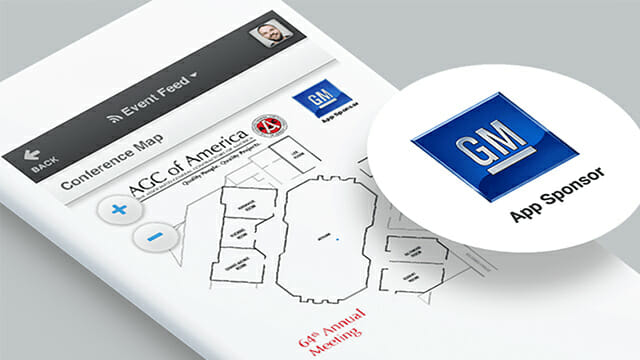How to Create a Sponsorship Strategy that Maximizes Event Revenue
As an event planner, you likely depend on multiple streams of event revenue to cover your costs and hopefully have enough left over to crack a profit. Common sources of revenue are ticket sales, merchandise, hotel bookings, paid workshops or/sessions and of course, sponsorships packages.
While it’s certainly possible to patch together money from all these various sources to cover all the expenses incurred to market and run your event, what can really make the biggest impact on your budget is generating dependable, ongoing revenue through sponsorship packages. In fact, Sponsorship.com’s The State of Association Sponsorship report indicates that almost three out of four event professionals agree that developing new sponsorship packages is the primary strategy to increase sponsorship revenue.
Developing strong relationships with sponsors who are interested in reaching your attendees and effective event sponsorship proposals can make the difference between having enough funds to run a decent event versus an incredibly unique, memorable event, also while turning a profit.
Show your Sponsors the ROI
The challenge is that today’s sponsors are becoming much more discerning about the opportunities they choose to invest in. As budgets become tighter and resources become more limited, customers are becoming more demanding and having higher expectations in what they choose to experience.
As a result, some sponsors are overlooking the traditional types of event sponsorship proposals because often times, they can’t deliver a clear return on investment and success metrics. Instead, brands are focusing their sponsorship spend on more directly measurable activation opportunities like sponsored event games, wifi, or mobile-apps. The hope is that these types of tactics will be able to show a clearer return on investment, whether it be increased attendee engagement or brand awareness.
Acquiring Sponsorship with Effective Sponsorship Packages
So as you can imagine, being able to provide creative, measurable sponsorship benefits and building new packages that address sponsors’ goals take more time and energy than relying on the traditional status quo.
You’re not alone if you think your sponsorship packages have pretty much remained the same year-over-year. It can be really challenging to come up with new ideas that are attractive to sponsors, feasible to implement, and cost-efficient. But by remaining stagnant and not evolving your sponsorship strategy to be competitive within your industry, you’re risking sponsors getting tired of the same routine offers and deciding to spend their money with your competitor.
Whether you’re seeking to attract new sponsors or looking to hold onto your well-established high-value relationships, it may be time to redesign your sponsorships so they offer a range of creative options that help sponsors achieve their goals.
Event Technology is an Event Planner’s Best Friend
Sponsor needs and expectations evolve as their customers’ needs and expectations evolve. In response, many event professionals are trying to stay a step ahead by developing new and innovative sponsorship opportunities and categories. And event technology has become the secret weapon to creating killer revenue-generating sponsorship packages that deliver and measure the results sponsors are demanding.
Event technology has advanced immensely from just a decade ago. Technologies that were previously unavailable, such as digital signage. mobile applications, games, social media activations, and other digital platforms, yield data that is real-time, easy to access, and accurate. This type of data has always been difficult to attain and measure through traditional forms of sponsorship.
Today, you can deliver metrics such as downloads, click-throughs, and survey responses to sponsors in real-time (or soon afterward), providing proof of the return on investment and actionable intelligence.
And not only does event technology deliver on the needs of sponsors, but it enhances the attendee experience as well so that they’re able to get the most out of the event, such as networking, obtaining resources from the sessions they attend, and having fun playing games if a gamification feature has been implemented. Event technology allows sponsorships to go beyond just achieving brand awareness objectives. It has the ability to enable real engagement with a target audience. Why not include elements of event engagement in your event sponsorship proposal?
Recommended Read: The Ultimate Guide to Event Gamification
So now you know that investing more time and budget in event technology is your best bet in creating robust, creative and measurable sponsorship packages that are irresistible to sponsors AND deliver the kind of results they’re looking for. But where do you start?
We’ve developed a guide that will take you through the key principles in crafting and executing a comprehensive sponsorship strategy that integrates event technology.
The first section focuses on the actual crafting of the sponsorship strategy. This includes understanding what your sponsors’ goals are, an overview of the key elements that comprise a strong revenue-generating sponsorship program, and the benefits of event technology.
The second section will take you through how to actually create event technology-based sponsorship packages, and provide ideas of the various technology features that are available.
In the third section, we provide tips on how to price your event technology sponsorship packages that balances maximizing your event revenue while providing offerings that are attractive to sponsors.
And to wrap things up, the fourth section covers an area that is often the most difficult and overlooked of all the event lifecycle stages – how to determine which analytics are relevant to demonstrating a clear return on investment to sponsors, and creating post-event reports on success metrics.
What’s Next:
- Planning an incredible event starts with building an incredible team.
- Planning, risk management, and security. How event tech can help.
Download our guide on how to create a sponsorship strategy that maximizes event revenue.

